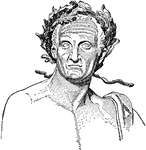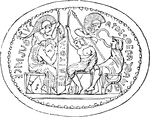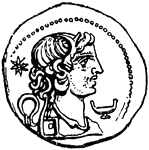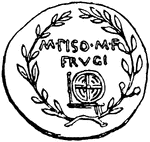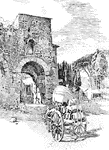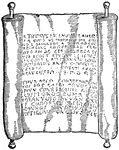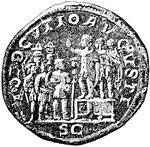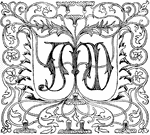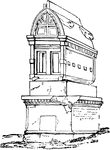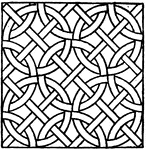
Roman Oblong Panel
This Roman oblong panel is at the underside of the architrave (moulded band) of the Temple of Vespasian…
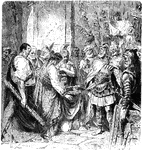
Odoacer Compels Augustulus to Yield the Crown
Augustulus is deposed from the crown by Odoacer, and was thus the last Western Roman Emperor.

Roman Ornament
The Roman Ornament is a marble biga design that is from an imitation of an original in bronze.
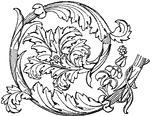
Roman Ornament
This Roman Ornament design comes from a "Florentine Pilaster". It is a richly decorated marble relief…

Pantheon
"The finest monument of this time is the Pantheon of Rome, first built about B.C. 27, which is one of…
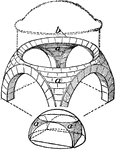
Diagram of Pendentives
A pendentive is a constructive device permitting the placing of a circular dome over a square room or…
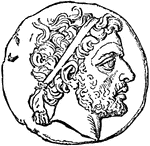
Philip V of Macedonia Coin
An illustration of a coin with the face of Philip V of Macedonia. Philip V was King of Macedonia from…

Statue of Phocion
"A more graceful mode of wearing the palla was to attach it by means of a brooch, and allow…

Plough
"The Romans, an essentially practical nation, largely improved on the plough, adding to it the coulter…

Plutarch
"Plutarch, as the great interpreter of Greece and Rome, exerted on generations succeeding him in influence…

Pluto, Persephone, and Mercury
"Mercury was sent, accompanied by Spring, to demand Persephone of Pluto. The wily monarch consented,…
Pompeiian Stand with Lighted Oil Lamp
A tall, thin lamp stand on a round, ornamented base with three claw feet. The top of the stand has a…
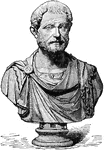
Probus
"The next Emperor was Aurelius Probus, officer of the army of Germany. He was chosen by the legions,…

Victory Coin over Pyrrhus
Roman coin struck to commemorate the victory over Pyrrhus and his elephants.

A Roman Aqueduct
"The Pont du Gard near Nimes (ancient Nemausus) in southern France. Built by the emperor Antoninus Pius.…

Roman Bath
"Roman Bath, from a Painting on the Walls of the Thermae of Titus at Rome." — Chambers' Encyclopedia,…

Roman Baths
"The baths of Titus, the name of each part of the building is inscribed on it. The small dome inscribed…

Roman Coin
"The so-called Republican, the earliest coinage, began at an early period of Roman history, and subsisted…

Roman Coins (Denarius)
An illustration of a roman coin (denarius). The left side represents the laurel-crowned head of Titus.…

Roman Eagle
"Eagle, as a military standard, was adopted by the Romans, and even by nations preceding them in history.…

A Roman Freight Ship
"This ship lies besides the wharf at Ostia. In the afterpart of the vessel is a cabin with two windows.…

A Roman Legionary
"From a monument of the imperial age. The soldier wears a metal helmet, a leather doublet with shoulder-pieces,…

A Roman Farmer with a Plow
Illustration of a Roman farmer driving his plow, called an aratrum. The man wears a typical brimmed…
Roman Siege Works
A Roman Siege Works, with A and B, a double wall; C, C, C, Vineæ; D, an Agger; E, a movable tower;…
